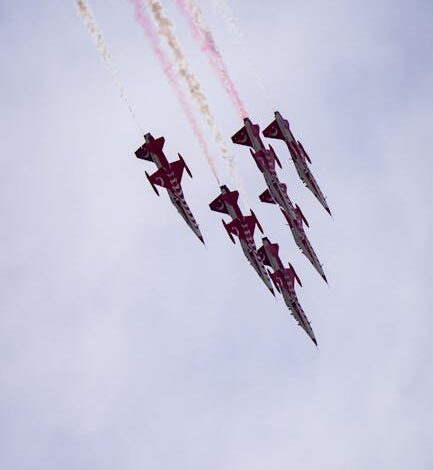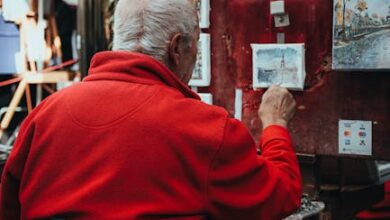More Executives Depart Hyundai’s Air Taxi Startup Supernal

More Executives Depart Hyundai’s Air Taxi Startup Supernal
Estimated Reading Time: 6 minutes
- Supernal’s Leadership Shake-Up: Hyundai’s air taxi subsidiary, Supernal, is experiencing significant executive departures, including its CEO, CTO, CCO, and CTO of Systems, following a pause in its vehicle program.
- Industry-Wide Challenges: These departures reflect the immense pressures and complexities facing the nascent eVTOL (electric Vertical Take-Off and Landing) industry, including technological hurdles, regulatory bottlenecks, and the evolving economic model for urban air mobility.
- Impact of Churn: Frequent leadership changes can disrupt strategic continuity, impact morale, slow development timelines, and introduce uncertainty for investors and partners in a speculative market segment.
- Hyundai’s Long-Term Vision: Despite short-term setbacks, Hyundai Motor Group views Supernal as a foundational component of its broader future mobility ecosystem, allowing for strategic patience and recalibration.
- Lessons for Innovation: The Supernal situation highlights the need for prioritizing foundational technology, cultivating stable and adaptable leadership, and embracing transparency with realistic timelines in high-stakes innovation.
- The Ripple Effect of Leadership Exodus
- Navigating the Turbulent Skies of eVTOL Development
- Hyundai’s Long-Term Vision Amidst Short-Term Setbacks
- Actionable Steps for Navigating High-Stakes Innovation
- A Real-World Parallel: The Evolution of Autonomous Driving
- Conclusion
The ambitious dream of urban air mobility (UAM), promising a future where electric air taxis whisk passengers above congested city streets, continues to capture the imagination of innovators and investors alike. Yet, the path to realizing this vision is proving to be fraught with challenges, as evidenced by recent developments at Hyundai’s air taxi subsidiary, Supernal. What began as a bold foray into next-generation transportation is now navigating a period of significant leadership flux, raising questions about the pace and strategy of this cutting-edge venture.
A wider leadership shake-up at Hyundai’s electric air taxi startup Supernal is underway just a few weeks after it paused work on its vehicle program and its CEO and CTO left. This pivotal moment underscores the immense pressures faced by companies attempting to revolutionize an industry that is still largely in its nascent stages. The departures signal more than just routine personnel changes; they reflect a deeper re-evaluation of strategy and execution within one of the most high-profile players in the burgeoning eVTOL (electric Vertical Take-Off and Landing) sector.
Supernal, initially launched as the Urban Air Mobility Division of Hyundai Motor Group, was conceived to lead the charge in developing safe, efficient, and accessible air mobility solutions. With substantial backing from one of the world’s largest automakers, it appeared uniquely positioned to overcome the formidable engineering, regulatory, and infrastructural hurdles inherent in creating a viable air taxi service. However, the recent cascade of executive exits suggests that even well-funded and strategically supported ventures are not immune to the inherent complexities of disruptive innovation.
The Ripple Effect of Leadership Exodus
In the high-stakes world of technology startups, especially those operating at the bleeding edge of aerospace engineering, leadership stability is paramount. The recent succession of departures at Supernal, following the earlier exits of its CEO and CTO, has extended to other crucial roles within the organization. Reports indicate that the Chief Commercial Officer, Chief Technology Officer of Systems, and other senior personnel have also moved on. Such a broad exodus can send ripples throughout an organization, impacting morale, disrupting strategic continuity, and potentially slowing down critical development timelines.
For any company engaged in long-term, capital-intensive projects like eVTOL development, consistent leadership provides a steady hand on the tiller. It ensures that vision, strategy, and execution remain aligned over extended periods, which are essential for navigating complex technical challenges and regulatory approvals. When key figures responsible for guiding commercial strategy, technological architecture, and overall program management depart, it inevitably creates a void that can be challenging to fill quickly without losing momentum. Each departure not only takes institutional knowledge with it but also requires time and resources to onboard new leaders, who then need to gain a comprehensive understanding of the project’s intricate details.
This leadership churn can also influence external perceptions. Investors and potential partners often look for signs of stability and clear direction, especially in an industry still grappling with public skepticism and unproven business models. While Hyundai’s overarching commitment remains strong, frequent changes at the operational helm can introduce an element of uncertainty into an already speculative market segment.
Navigating the Turbulent Skies of eVTOL Development
The challenges facing Supernal are, in many respects, symptomatic of the broader difficulties confronting the entire eVTOL industry. Developing an electric air taxi involves far more than just designing an aircraft. It necessitates simultaneously innovating across multiple fronts: advanced battery technology, propulsion systems, autonomous flight capabilities, air traffic management integration, regulatory certification across different jurisdictions, and the construction of ground infrastructure (vertiports).
Regulatory hurdles, in particular, represent a significant bottleneck. Aviation authorities worldwide are taking a cautious approach, demanding rigorous testing and certification processes to ensure public safety. This often means longer development cycles and higher costs than initially anticipated by many startups. Furthermore, the economic model for UAM is still evolving. The high cost of development and manufacturing needs to be balanced against the desired affordability for mass market adoption. Finding the sweet spot between cutting-edge technology, regulatory compliance, and commercial viability is an enormous undertaking.
Many early entrants in the eVTOL space, fueled by enthusiastic investment and optimistic timelines, are now confronting the harsh realities of execution. Some are pivoting their strategies, others are consolidating, and a few are scaling back their ambitions. The pause in Supernal’s vehicle program, coupled with the executive departures, can be seen as a strategic recalibration in light of these industry-wide complexities. It reflects a difficult but often necessary decision to reassess priorities and potentially reallocate resources to foundational technologies or alternative market entry strategies.
Hyundai’s Long-Term Vision Amidst Short-Term Setbacks
Despite the current turbulence at Supernal, it’s crucial to view these developments within the context of Hyundai Motor Group’s larger strategic vision. Hyundai’s investment in UAM is not merely about building a single air taxi model; it’s a foundational component of its future mobility ecosystem. The conglomerate envisions a future of integrated mobility, where electric vehicles, robotics, and advanced air mobility solutions work in concert to offer seamless transportation experiences. From this perspective, Supernal represents a long-term strategic play rather than a short-term product launch.
Major corporations embarking on moonshot projects often face periods of intense internal restructuring and strategic re-evaluation. The parent company’s deep pockets and long-term commitment provide a buffer that most independent startups lack. This allows for a more patient and methodical approach to innovation, even if it means weathering periods of uncertainty and leadership changes. It’s plausible that Hyundai is leveraging this moment to consolidate its UAM strategy, perhaps focusing more on critical underlying technologies or taking a more measured approach to vehicle development, ensuring that the foundational elements are robust before accelerating towards market entry.
The challenges at Supernal may ultimately lead to a stronger, more resilient organization. By taking a step back and reassessing its approach, Hyundai can refine its strategy, streamline operations, and potentially emerge with a more sustainable path forward for urban air mobility. This strategic patience is a luxury afforded by its corporate parentage, differentiating Supernal’s situation from many independent eVTOL startups struggling for survival.
Actionable Steps for Navigating High-Stakes Innovation
For companies in similar positions, or investors considering the UAM sector, these developments offer valuable lessons:
- Prioritize Foundational Technology and Regulatory Alignment: Instead of rushing to build a complete vehicle, focus on mastering key components (e.g., battery tech, propulsion, autonomous flight systems) and working closely with regulators from the outset. A robust, certifiable core is more valuable than a flashy prototype that can’t pass muster.
- Cultivate a Stable and Adaptable Leadership Team: Implement rigorous succession planning and create a corporate culture that values resilience and adaptability. In highly uncertain fields, leaders must be prepared for pivots and setbacks, fostering an environment where talent feels secure and empowered to navigate long, complex development cycles.
- Embrace Transparency and Realistic Timelines: Communicate openly with stakeholders – employees, investors, and the public – about the inherent challenges and the iterative nature of innovation. Setting realistic expectations about development timelines, regulatory hurdles, and market adoption can mitigate disappointment during inevitable adjustments.
A Real-World Parallel: The Evolution of Autonomous Driving
Consider the journey of autonomous driving companies. What started with ambitious predictions of fully self-driving cars on roads by 2020 has evolved into a more measured, incremental approach. Companies like Waymo (Alphabet’s self-driving division) and Cruise (GM’s unit) have experienced leadership changes, strategic pivots, and significant delays, yet their parent companies remain committed. They learned that the technological, regulatory, and public acceptance hurdles were far more complex than initially imagined. Their long-term vision and willingness to adapt, even if it meant slowing down and incurring higher costs, ultimately kept them in the race, focusing on perfecting the technology before widespread deployment.
Conclusion
The executive departures at Supernal are a stark reminder of the immense difficulties inherent in pioneering a new mode of transportation. The eVTOL industry, while promising, is still in its infancy, demanding unprecedented levels of innovation, capital, and patience. Hyundai’s Supernal is at a critical juncture, having paused its vehicle program and undergoing significant leadership changes. While these events undoubtedly present formidable challenges, they also offer an opportunity for strategic recalibration and a renewed focus on the long-term vision. The future of urban air mobility remains a captivating prospect, but its realization will depend on sustained commitment, adaptive strategies, and leadership that can navigate through periods of intense turbulence.
What are your thoughts on the future of urban air mobility and the challenges faced by pioneers like Supernal? Share your insights in the comments below, or subscribe to our newsletter for more updates on this rapidly evolving industry.
Frequently Asked Questions
- What is Supernal?
- Why are executives leaving Supernal?
- What are the main challenges facing the eVTOL industry?
- How is Hyundai Motor Group handling these setbacks?
- What is the future outlook for urban air mobility?
What is Supernal?
Supernal is Hyundai’s subsidiary dedicated to urban air mobility (UAM). It was launched as the Urban Air Mobility Division of Hyundai Motor Group with the ambitious goal of developing safe, efficient, and accessible electric air taxi solutions.
Why are executives leaving Supernal?
A wider leadership shake-up is underway at Supernal, following the earlier departures of its CEO and CTO. This exodus, which includes the Chief Commercial Officer and Chief Technology Officer of Systems, reflects a re-evaluation of strategy and execution amidst the immense pressures and complexities of the nascent eVTOL industry. It may also indicate a strategic recalibration in response to industry-wide challenges and longer-than-anticipated development cycles.
What are the main challenges facing the eVTOL industry?
The eVTOL industry faces numerous challenges, including:
- Technological Innovation: Developing advanced battery technology, propulsion systems, and autonomous flight capabilities.
- Regulatory Hurdles: Navigating rigorous testing and certification processes from aviation authorities globally to ensure public safety.
- Infrastructure Development: Building necessary ground infrastructure like vertiports.
- Economic Viability: Balancing high development and manufacturing costs with the need for affordable mass market adoption.
- Public Acceptance: Overcoming skepticism and building trust in a new mode of transportation.
How is Hyundai Motor Group handling these setbacks?
Despite the turbulence at Supernal, Hyundai’s commitment to urban air mobility remains strong as a foundational component of its long-term future mobility ecosystem. The executive departures and the pause in the vehicle program can be seen as a strategic recalibration, allowing Hyundai to reassess priorities, streamline operations, and potentially focus on underlying technologies. As a major corporation, Hyundai has the resources and strategic patience to weather these challenges and refine its approach for a more sustainable path forward.
What is the future outlook for urban air mobility?
The future of urban air mobility remains a captivating prospect, despite the current challenges faced by pioneers like Supernal. While the industry is in its infancy and demands unprecedented levels of innovation, capital, and patience, the long-term vision of seamless, electric air transportation above congested cities continues to drive development. Its realization will depend on sustained commitment, adaptive strategies, and leadership capable of navigating intense technological, regulatory, and commercial turbulence.





